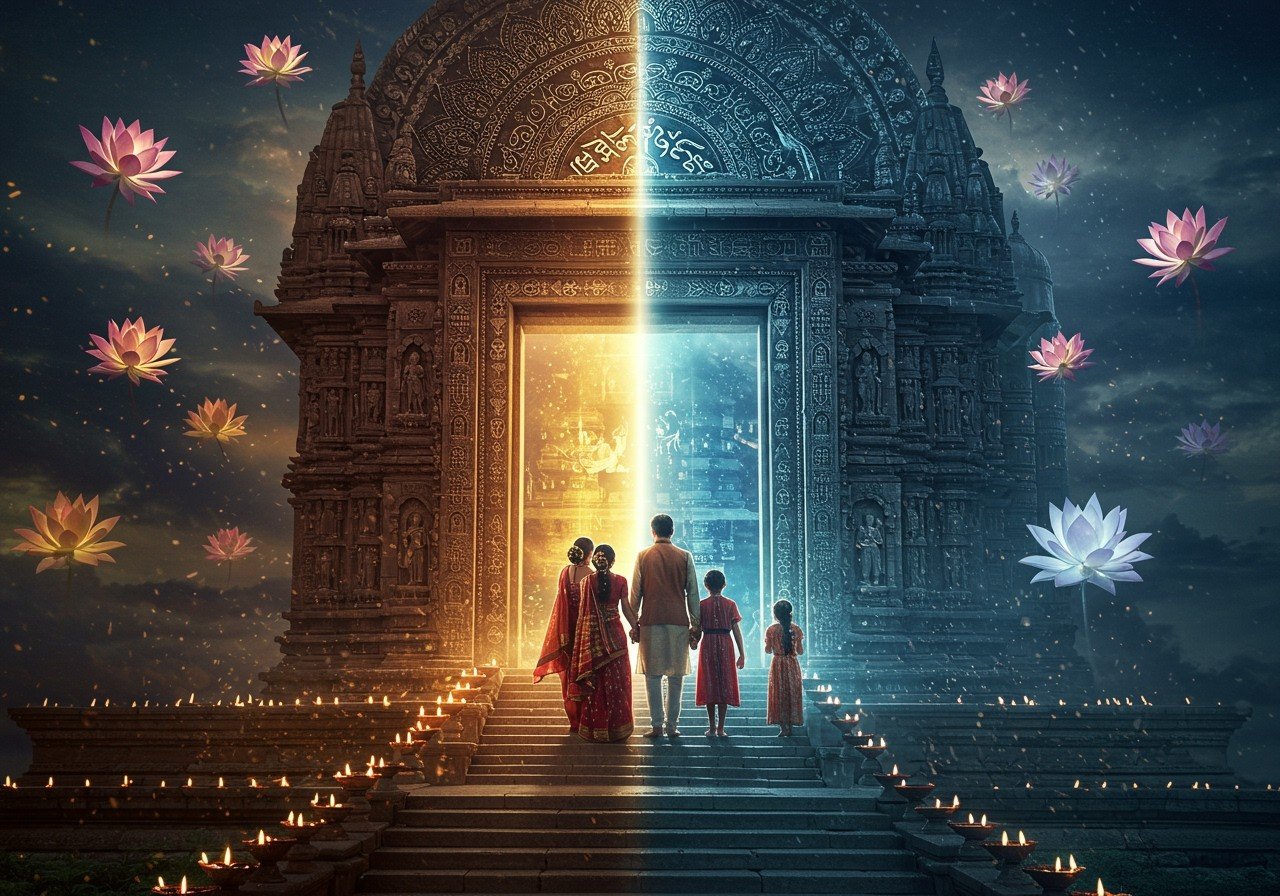
Hinduism, the world’s oldest living religion, boasts a rich tapestry of traditions, philosophies, and practices. With over 1.2 billion followers globally, it continues to demonstrate remarkable resilience and adaptability. As we journey into the future, understanding Hinduism’s evolution and adaptation to modern challenges becomes paramount. This article explores the potential growth and hurdles Hinduism may encounter, examining its sustainability and relevance in contemporary society.
A Glance at the Past
To comprehend Hinduism’s future trajectory, we must first delve into its historical roots. Originating in ancient civilizations like the Indus Valley, Hinduism’s journey is marked by significant milestones:
- Vedic Period: This era laid the groundwork for Hindu beliefs and rituals, shaping the very essence of the faith.
- Upanishadic Teachings: These philosophical texts delved into profound spiritual concepts, influencing Hindu thought for millennia.
- Influential Figures: Sages like Adi Shankaracharya played pivotal roles in shaping Hindu philosophy and practice.
Hinduism’s expansion was facilitated by trade, migration, and cultural exchange. Colonialism and the Indian independence movement further impacted its global perception and practices.
Present-Day Trends in Hinduism
Today, Hinduism navigates a complex landscape of evolving trends:
- Demographics: The global Hindu population exceeds 1.2 billion, with a Total Fertility Rate (TFR) mirroring the global average. Growth is anticipated in certain regions, while others may experience shifts in demographics.
- Technology’s Embrace: Social media and digital platforms are increasingly utilized to disseminate Hindu teachings and connect communities worldwide. This presents both opportunities and challenges for maintaining authenticity and combating misinformation.
- Youth Engagement: A renewed interest in Hindu rituals and festivals among younger generations signals a potential resurgence of traditional practices. This revitalization offers hope for the continuity of cultural heritage.
- Globalization’s Impact: Diaspora communities play a vital role in preserving Hindu traditions across geographical boundaries. This global interconnectedness fosters cultural exchange and strengthens the sense of shared identity.
- Political Influences: The interplay between politics and religion continues to shape Hinduism’s trajectory. Navigating this complex relationship is crucial for maintaining religious harmony and inclusivity.
Avenues for Growth
Hinduism possesses significant potential for growth in various spheres:
- Wellness and Spirituality: The global appeal of yoga, meditation, and Hindu philosophy offers a pathway for expanding its reach. These practices resonate with individuals seeking holistic well-being and spiritual exploration.
- Community Building: Temples and cultural organizations serve as vital hubs for fostering community bonds and transmitting cultural values. Strengthening these institutions is crucial for supporting future generations.
- Interfaith Dialogue: Engaging in constructive dialogue with other faiths promotes understanding and cooperation. This collaborative approach can address shared challenges and foster a more harmonious world.
- Addressing Contemporary Issues: Hinduism’s teachings on dharma and karma offer valuable insights for tackling contemporary issues like climate change and social justice. By engaging with these challenges, Hinduism can remain relevant in the modern world.
Challenges on the Horizon
Hinduism faces several potential obstacles that require careful consideration:
- Modernization’s Impact: Balancing tradition with modernity presents a complex challenge. Adapting to evolving societal norms while preserving core values requires careful navigation.
- Maintaining Religious Identity: In an increasingly secular world, preserving a strong Hindu identity can be challenging. Reinforcing cultural values and fostering a sense of belonging are essential for maintaining continuity.
- Internal Divisions: Addressing internal conflicts and divisions within Hindu communities is crucial for fostering unity and strength. Promoting inclusivity and understanding can bridge these divides.
- Extremism and Intolerance: Combating religious extremism and intolerance is paramount for safeguarding Hinduism’s peaceful nature. Promoting education and understanding can counter these harmful influences.
- Educating Future Generations: Imparting Hindu traditions and values to younger generations is essential for ensuring the faith’s continuity. Developing engaging educational programs and resources can facilitate this process.
Hinduism’s Future: A Tapestry of Resilience and Adaptation
Hinduism’s adaptability and deep-rooted cultural heritage position it for continued relevance in the future. Factors contributing to its enduring presence include:
- Education and Preservation: Transmitting knowledge and preserving sacred texts are vital for maintaining Hinduism’s intellectual and spiritual legacy.
- Intergenerational Transmission: Passing down traditions and values from one generation to the next ensures the continuity of cultural practices.
- Evolution and Modern Values: Integrating new ideas while upholding core principles allows Hinduism to remain relevant in a changing world.
- Global Community Support: The interconnectedness of Hindu communities worldwide provides a strong network for mutual support and resource sharing.
Hinduism’s future is intertwined with its ability to strike a balance between honoring tradition and embracing innovation. By navigating these complexities, Hinduism can continue to flourish and inspire for generations to come. The projected growth of the Hindu population in North America, expected to nearly double by 2050 due to migration, further underscores its global presence. Meanwhile, in India, the religious landscape continues to evolve, with Christians, including some who identify as Hindu on official forms, projected to comprise 2.2% of the population by 2050.
Poojn.in: Supporting Modern Hindu Practice
Poojn.in, India’s leading online store for cultural and religious goods, empowers individuals to engage with Hindu traditions in the digital age. Offering a vast selection of authentic puja items, Poojn.in bridges the gap between traditional practices and modern convenience. Explore a wide range of products, including havan samagri, puja thalis, sacred threads, deity idols, and ritual books, all carefully curated to support your spiritual journey.
For those seeking to deepen their understanding of Hindu scriptures and traditions, Poojn.in’s blog offers valuable insights into sacred texts and their significance.
Embracing the Future with Wisdom and Tradition
As Hinduism stands at the crossroads of tradition and modernity, its ability to adapt and evolve will shape its future. By fostering education, preserving cultural heritage, and engaging with contemporary challenges, Hinduism can continue to inspire and guide individuals on their spiritual paths. Let us honor the past, embrace the present, and look forward to a future where Hinduism continues to illuminate the world with its wisdom and traditions.


